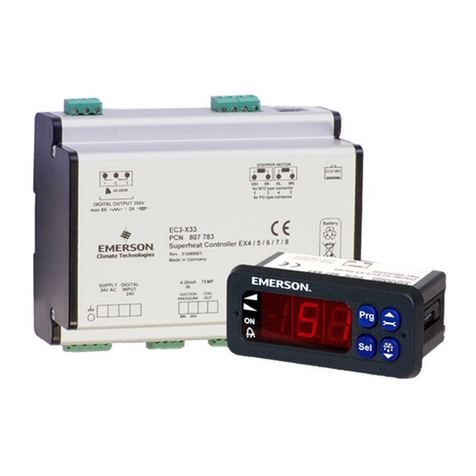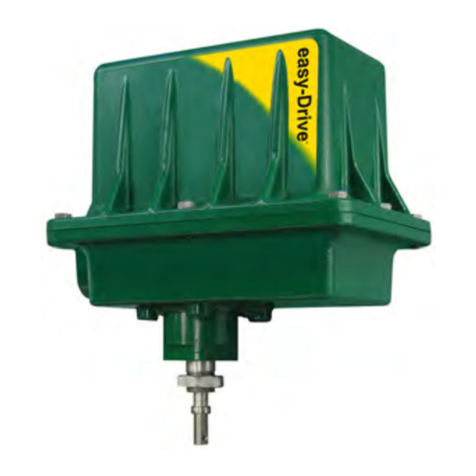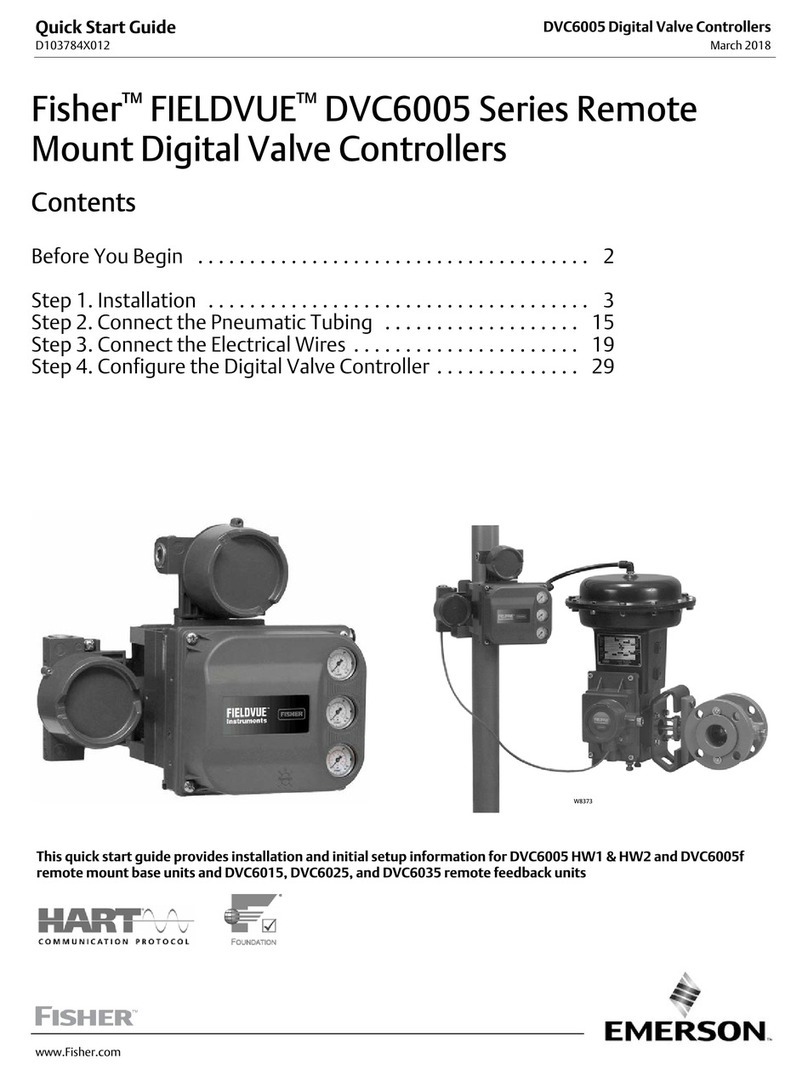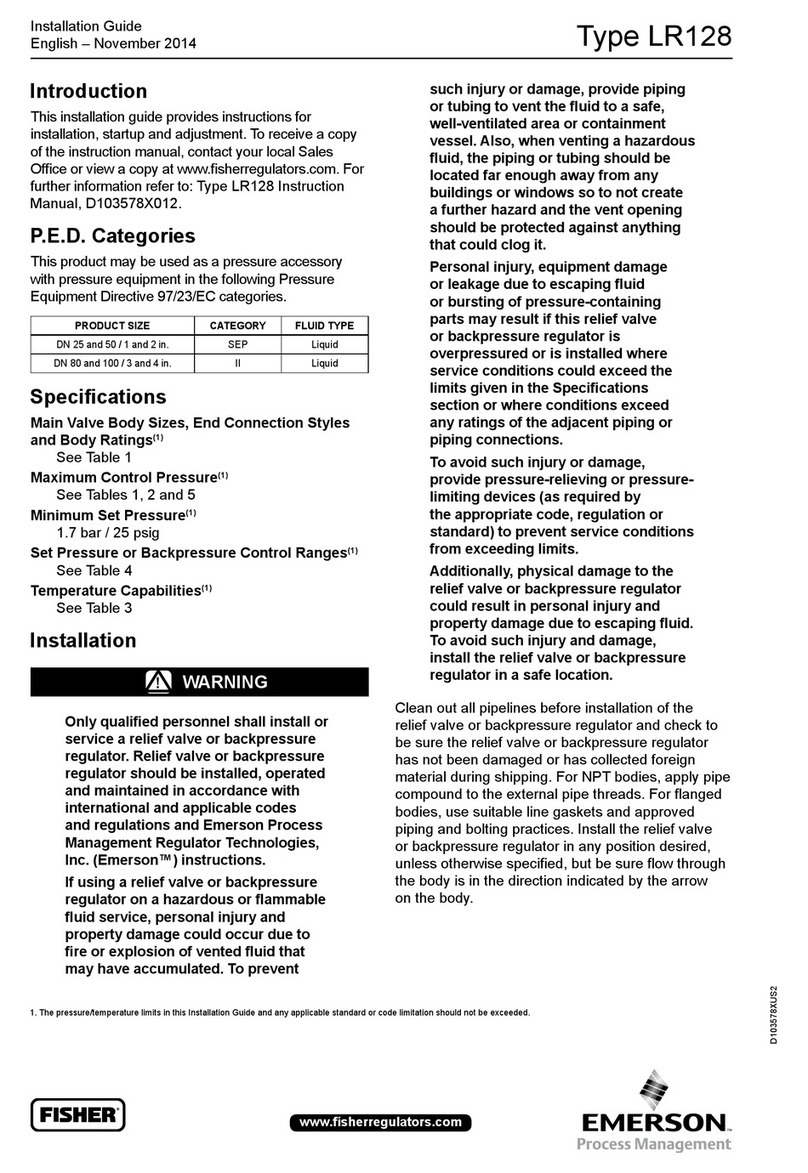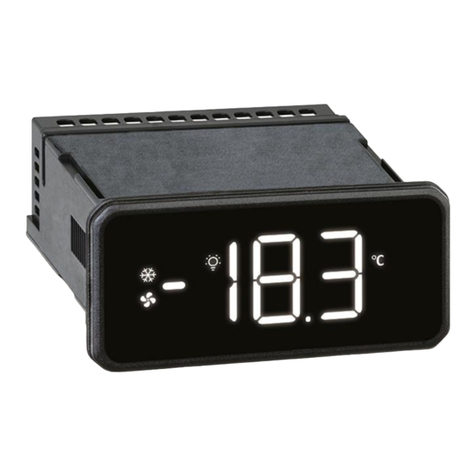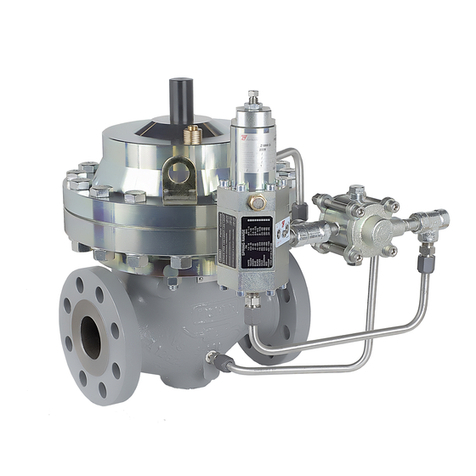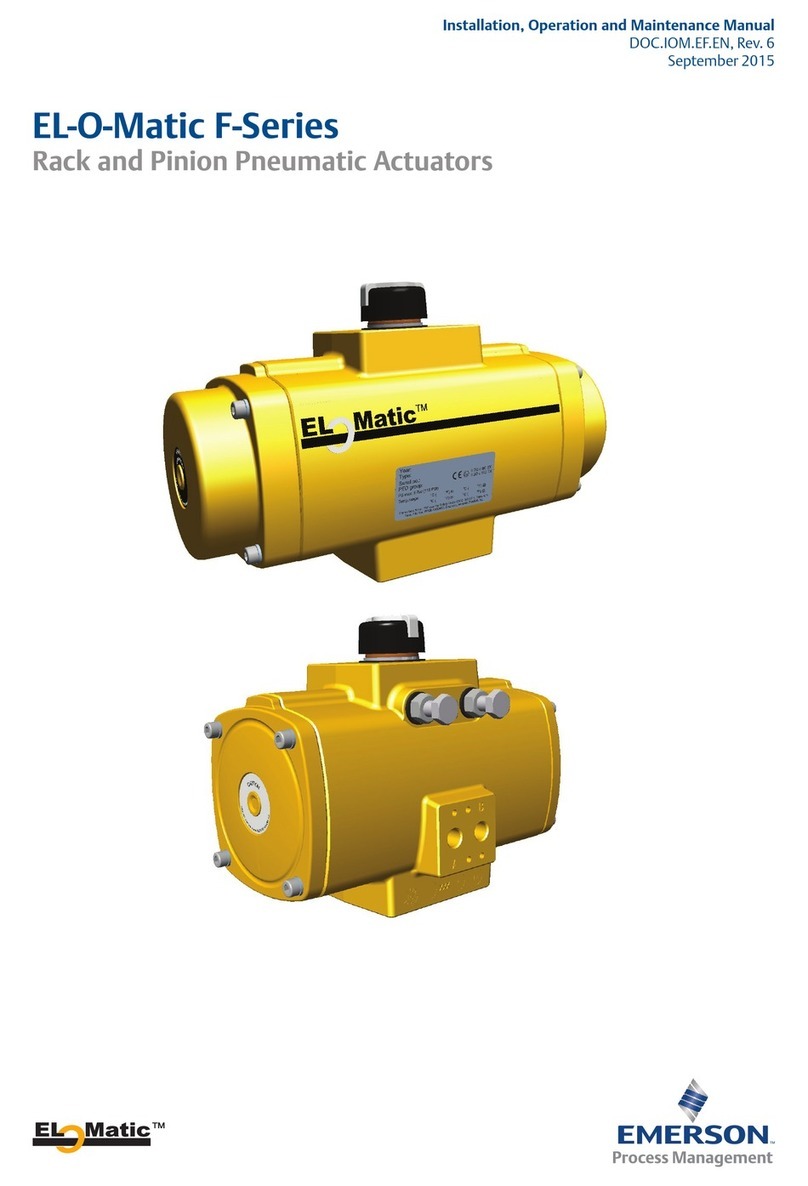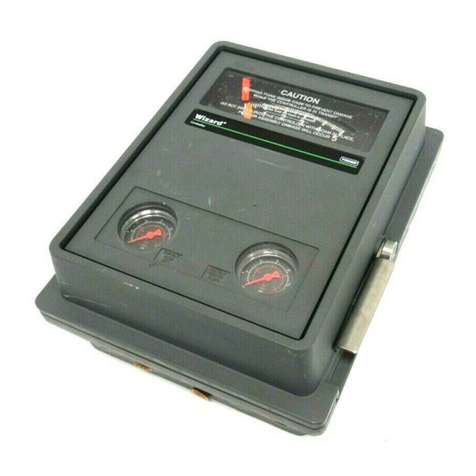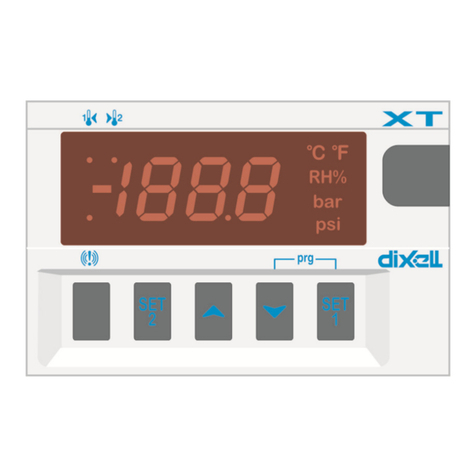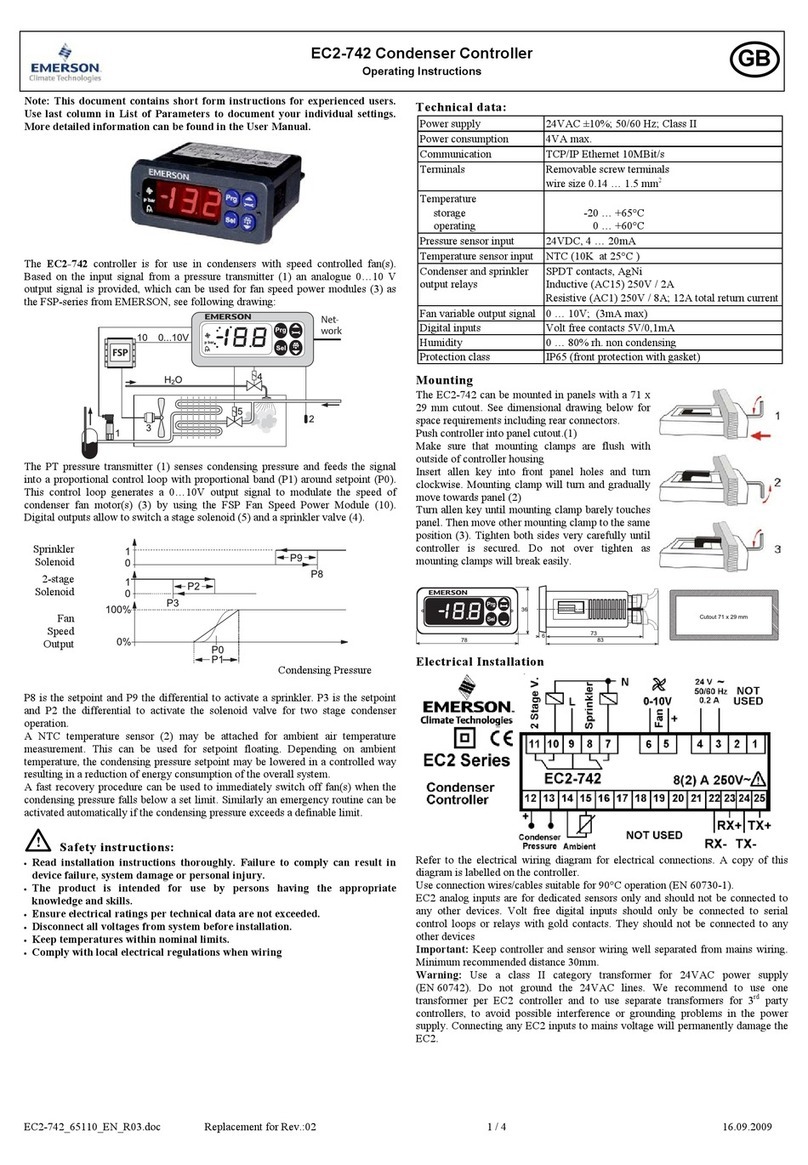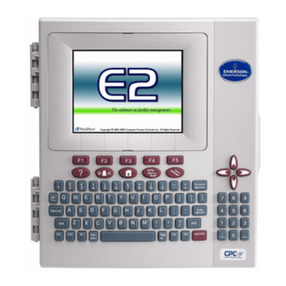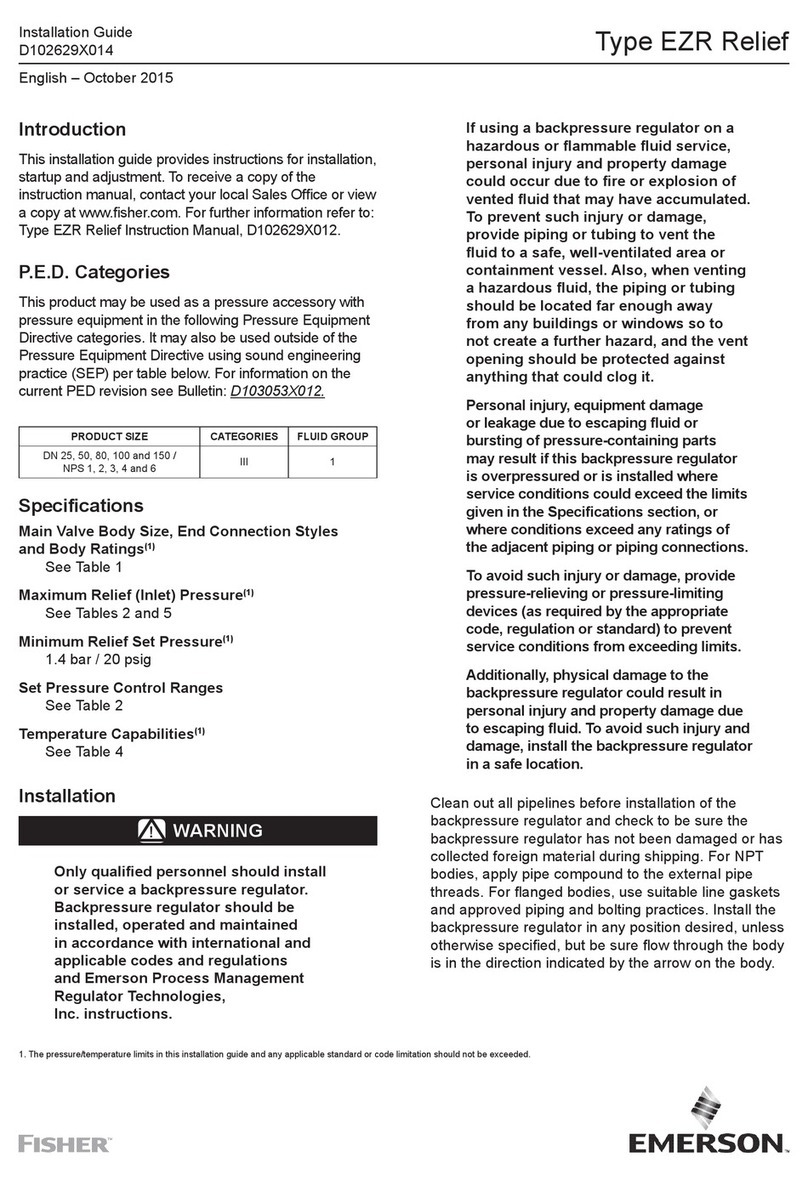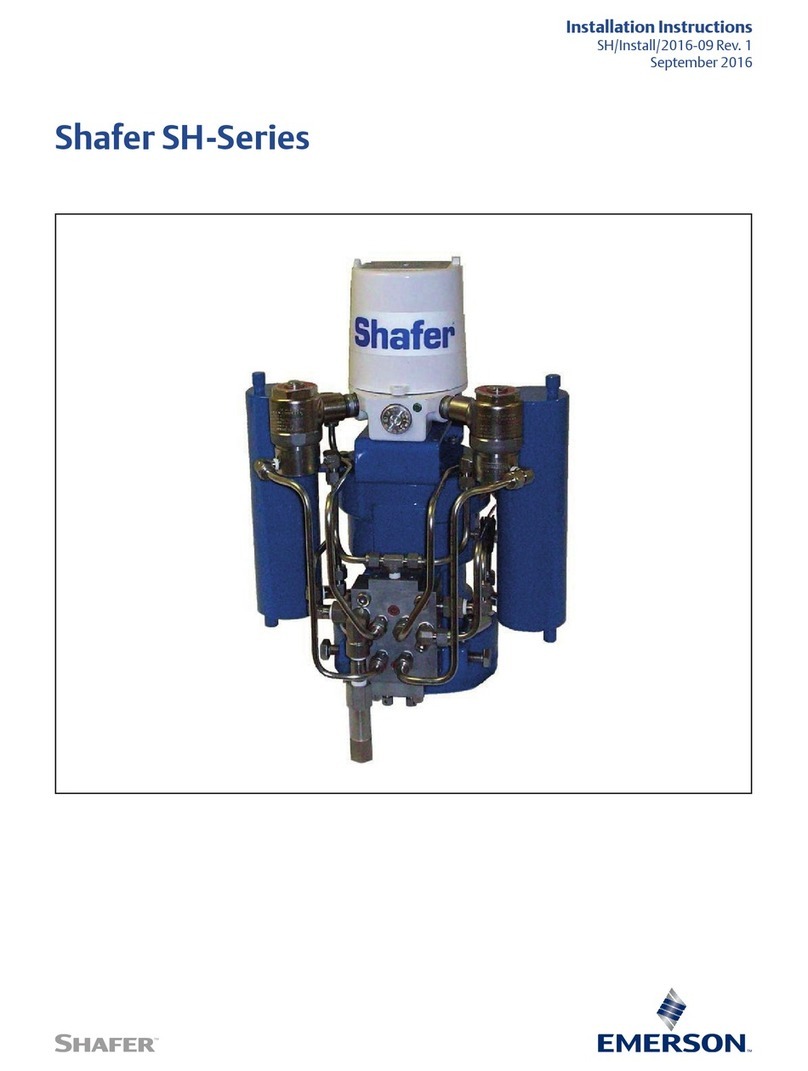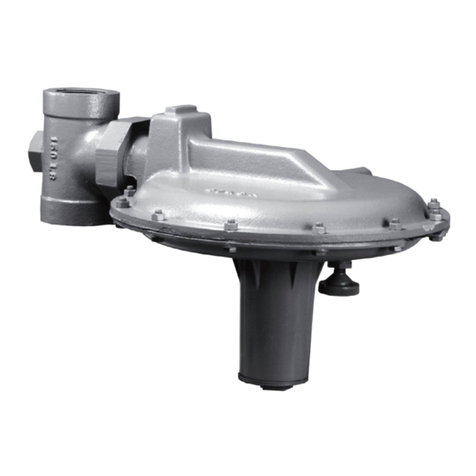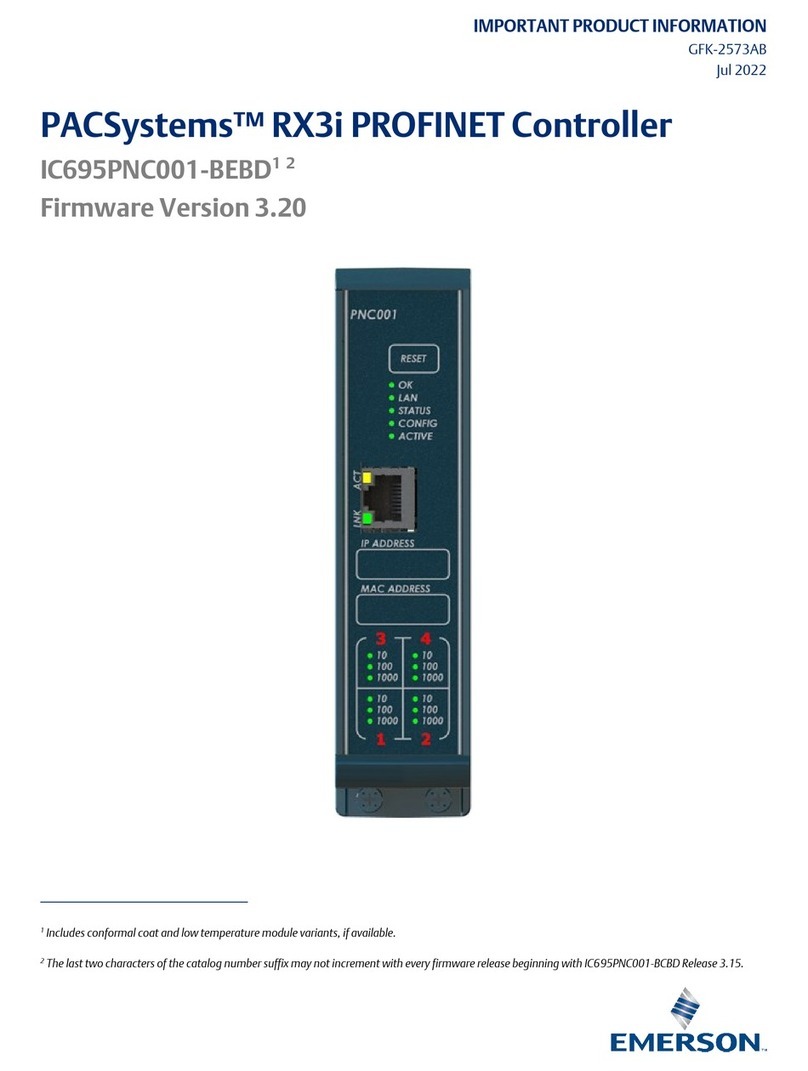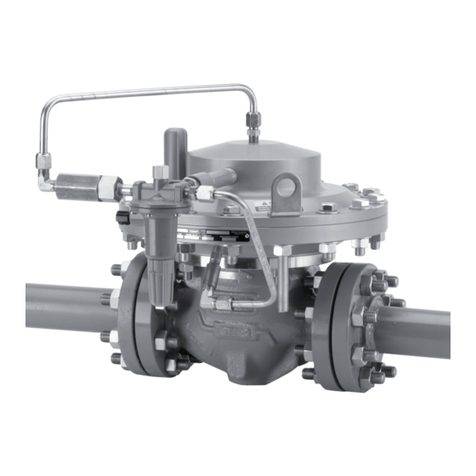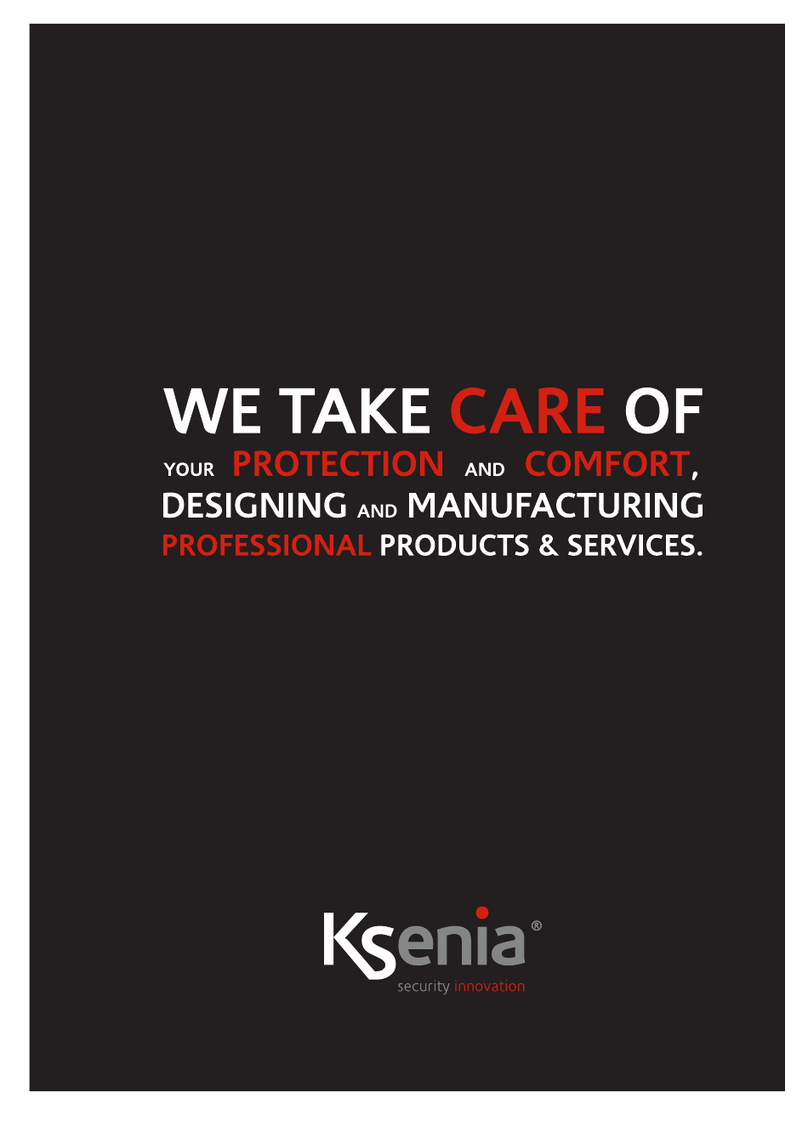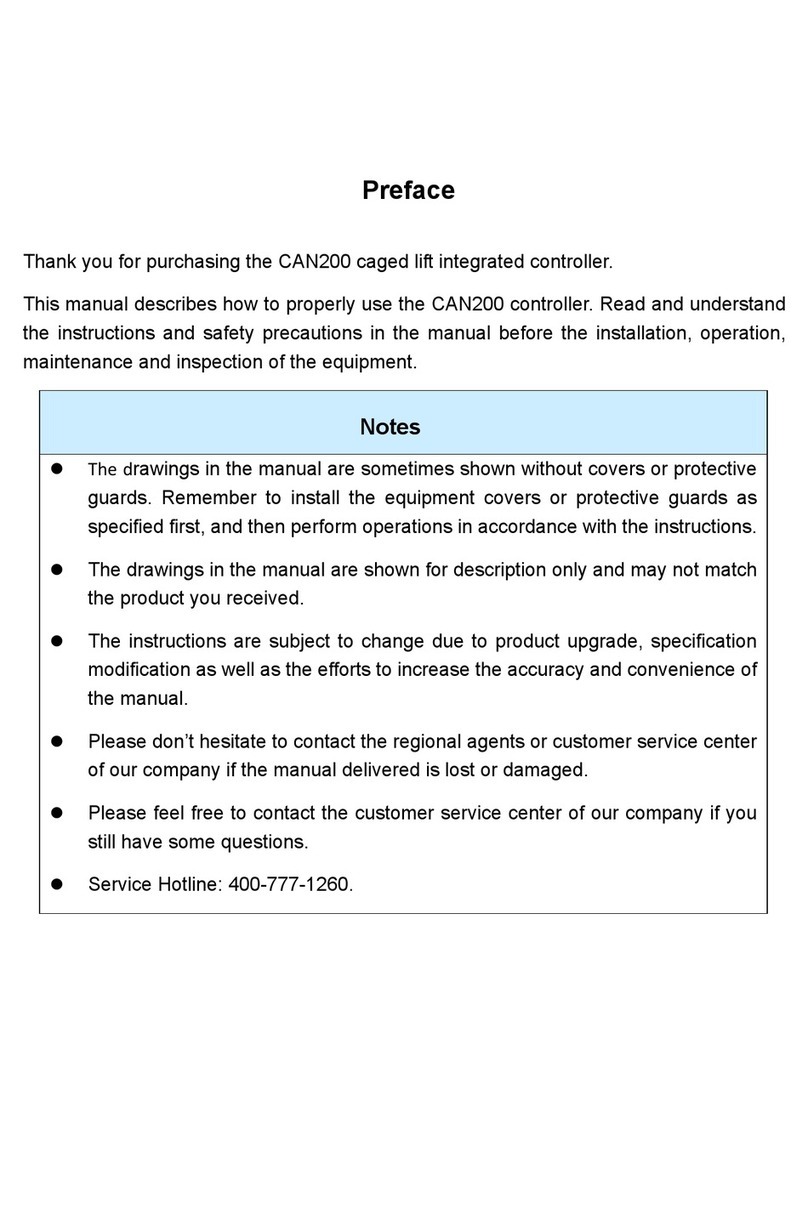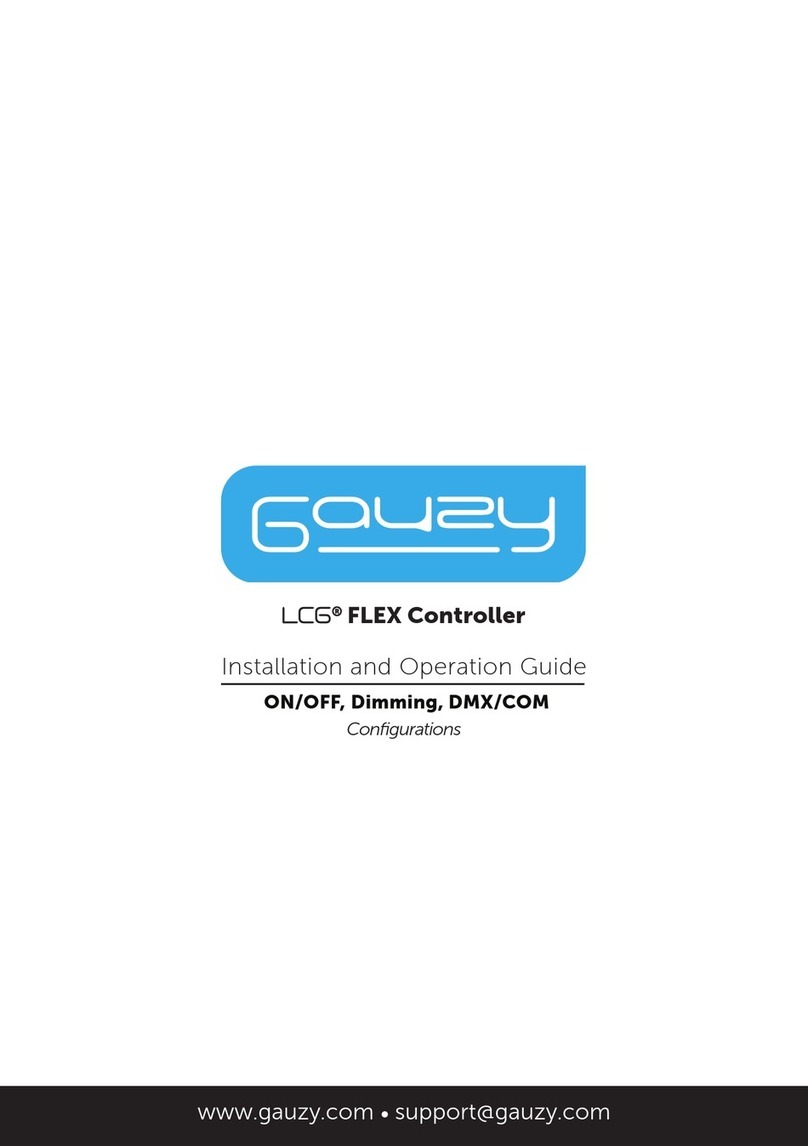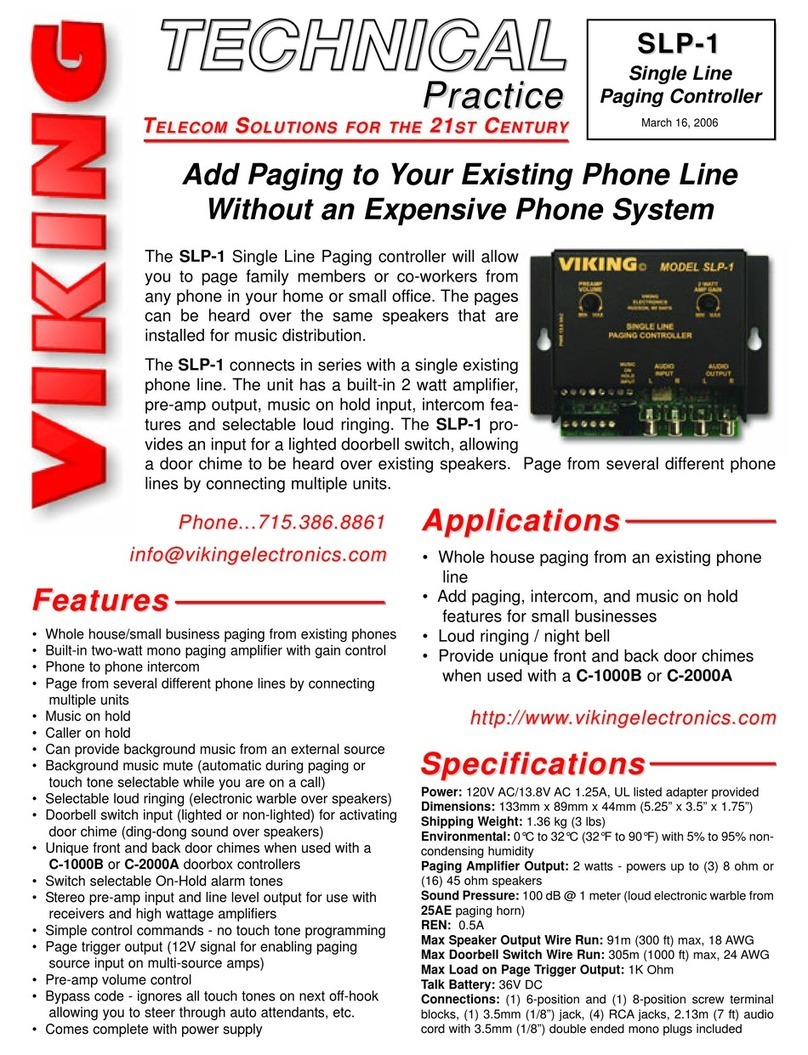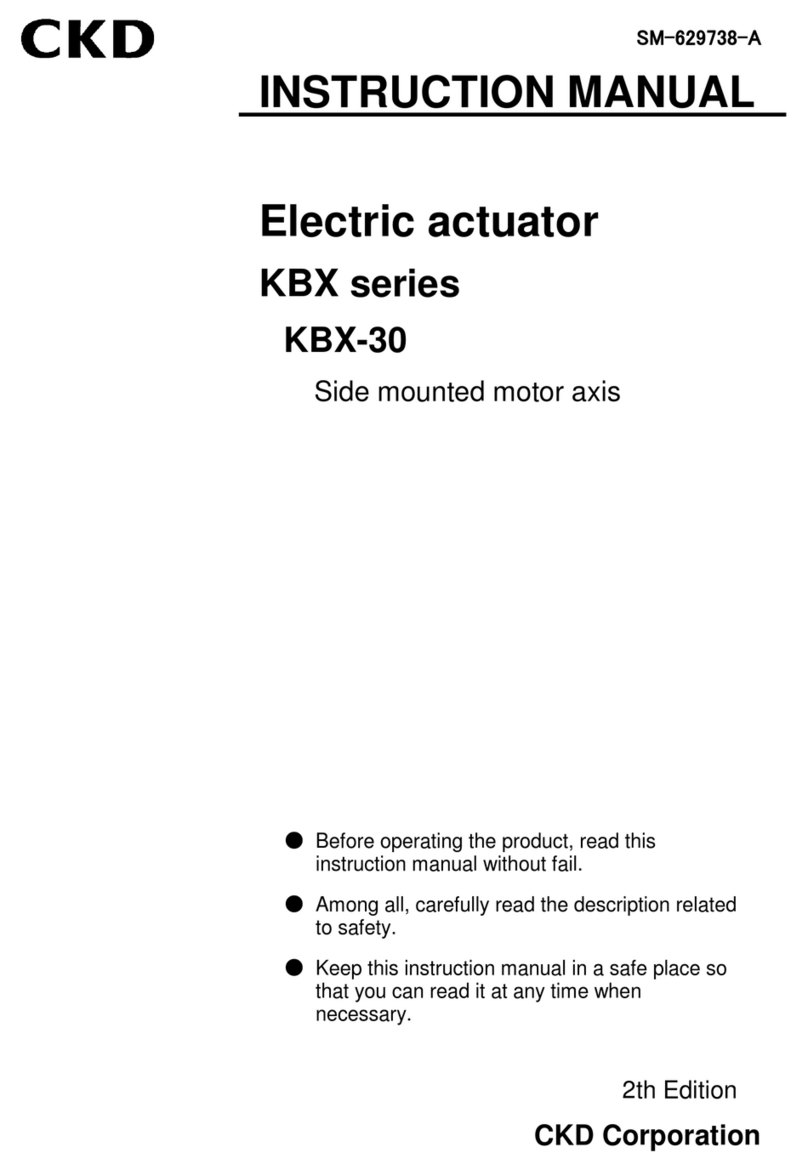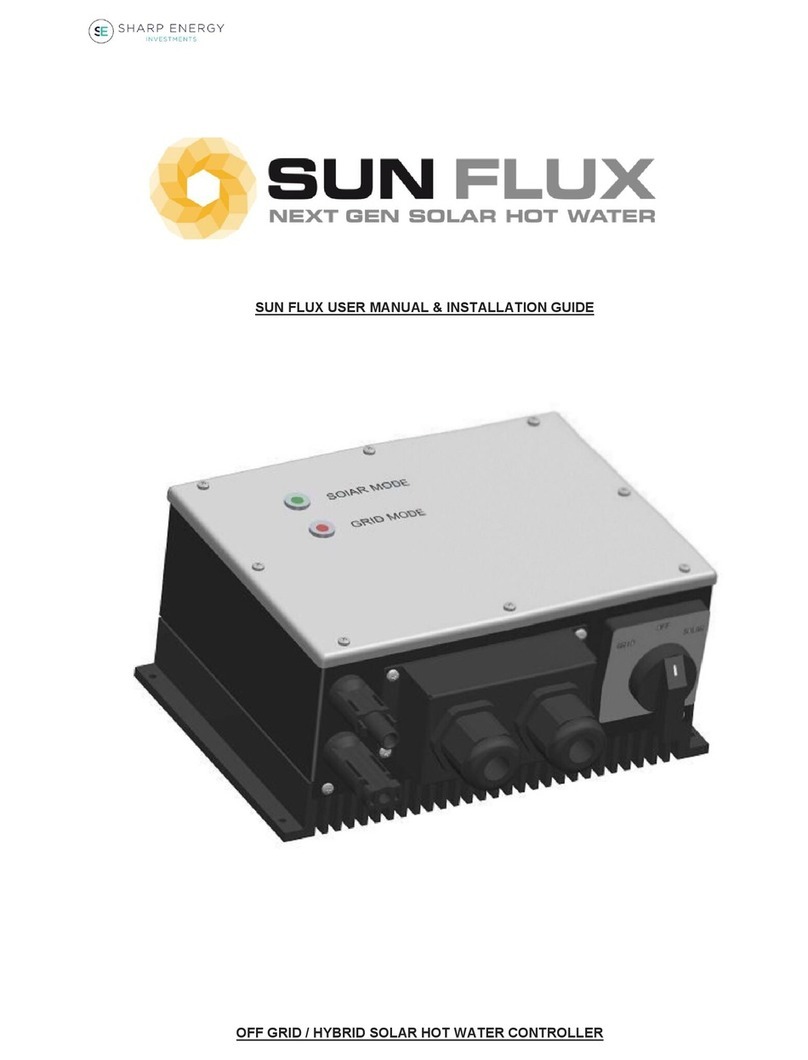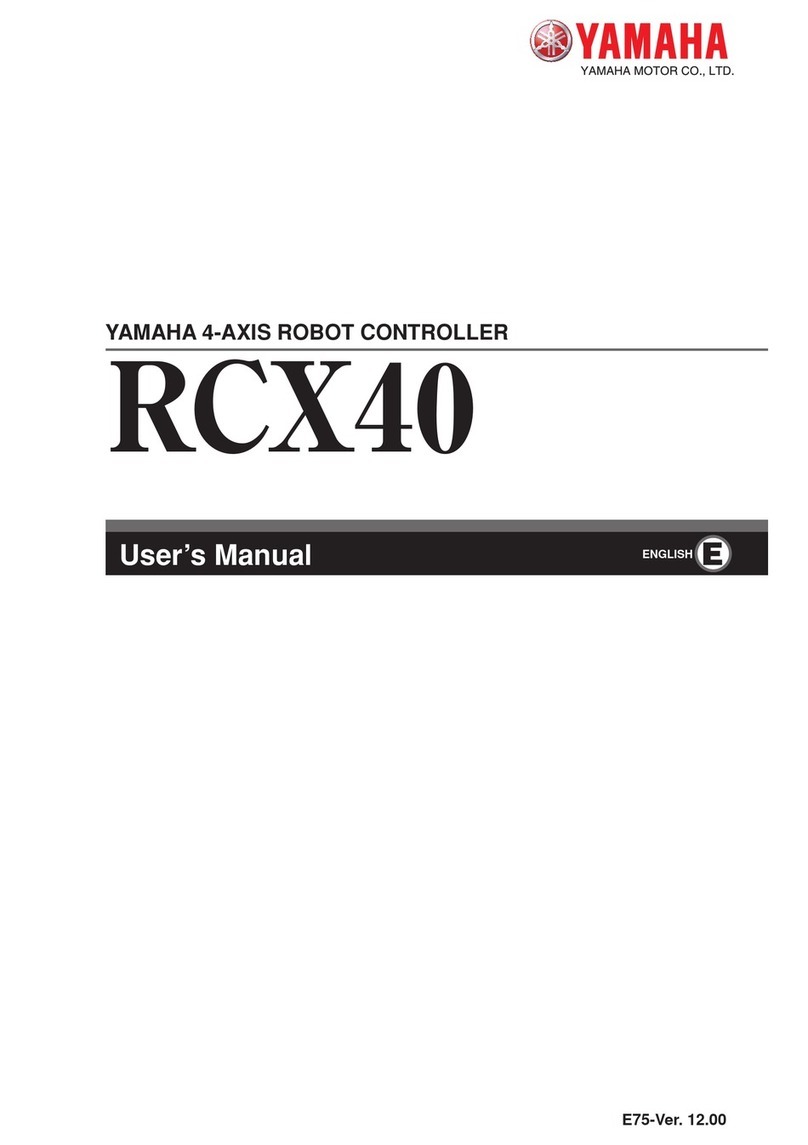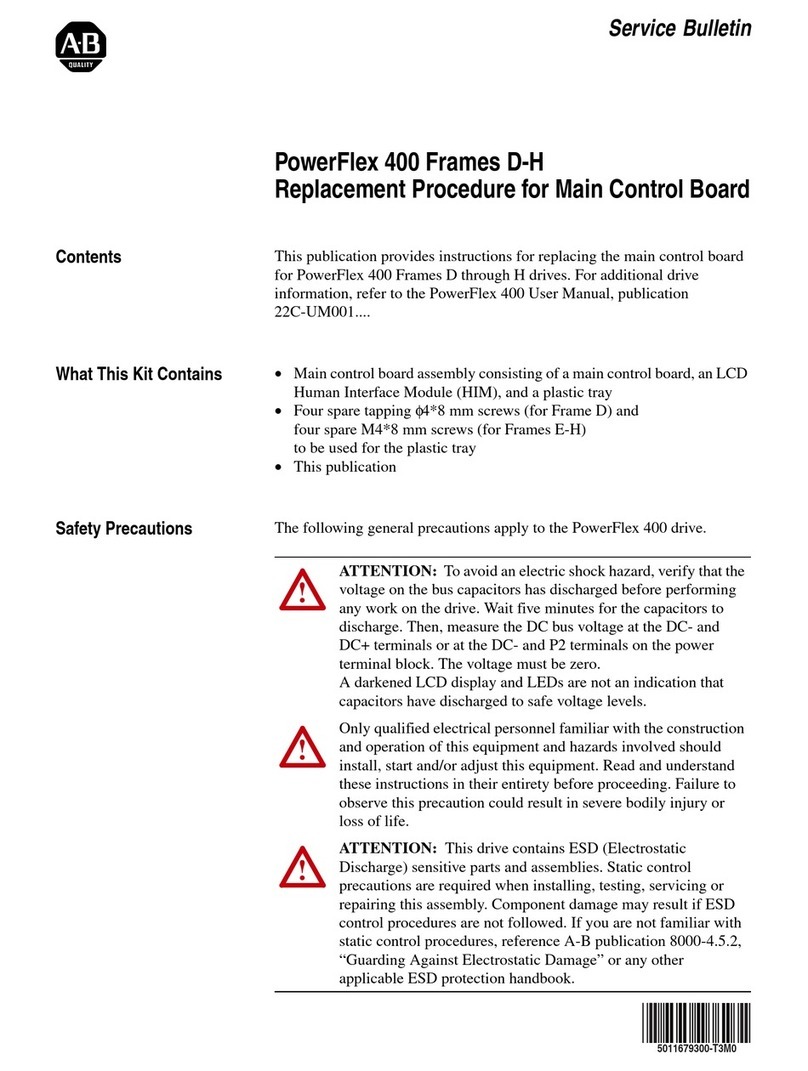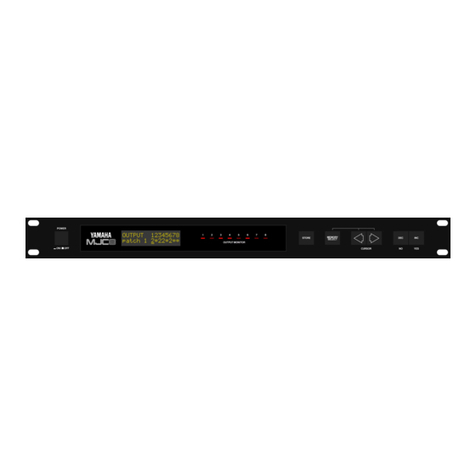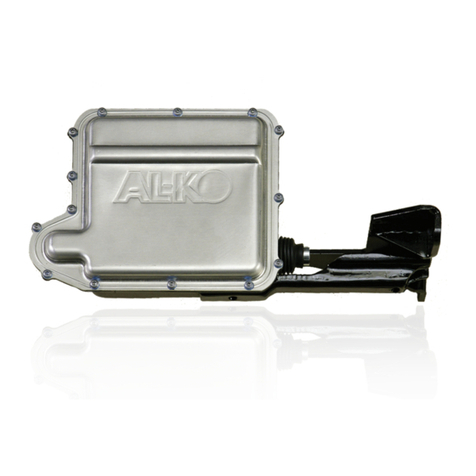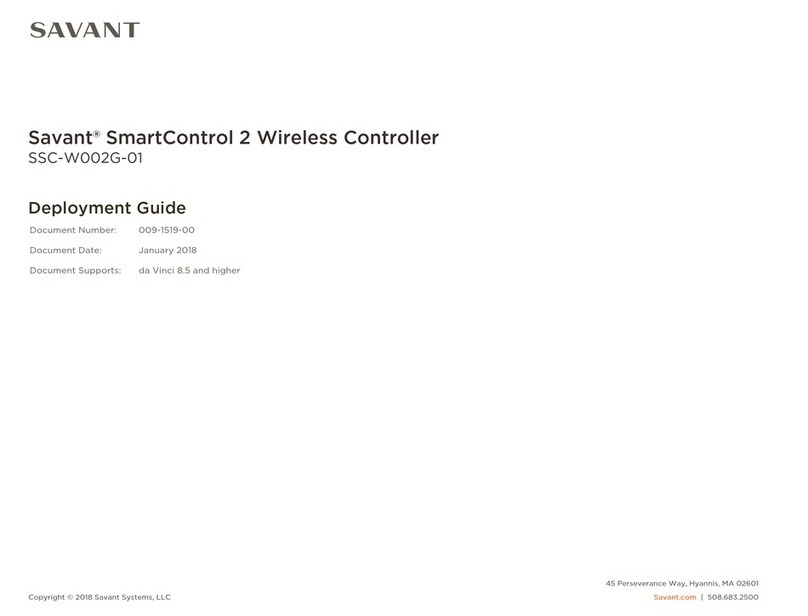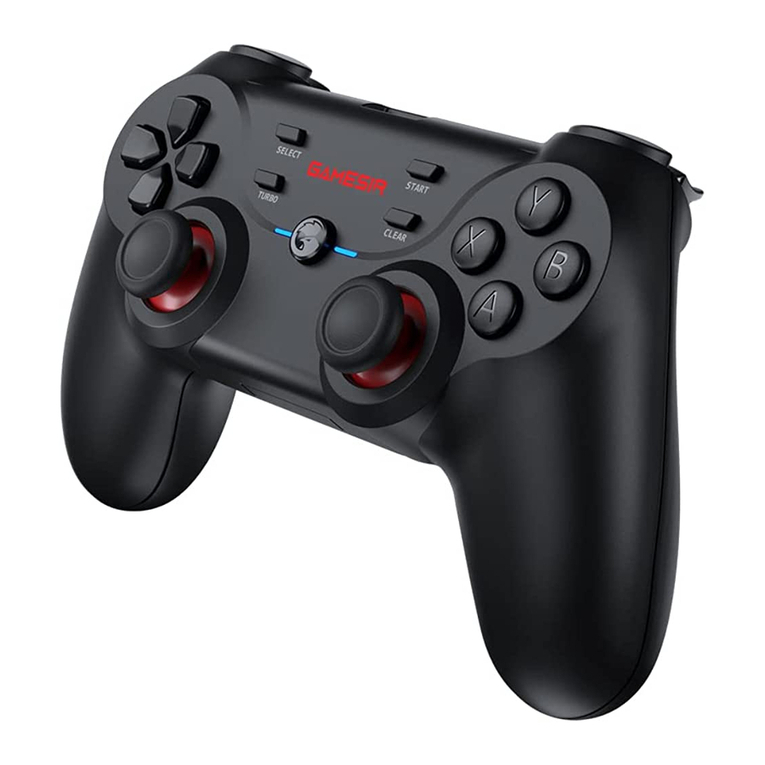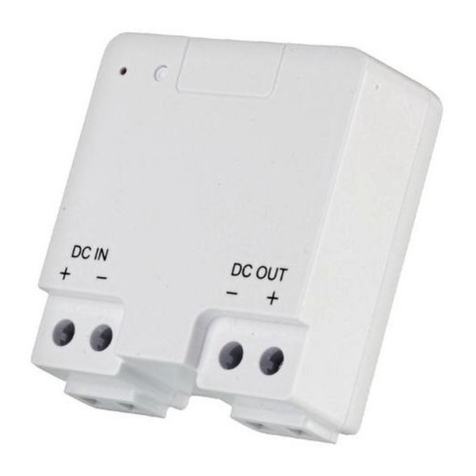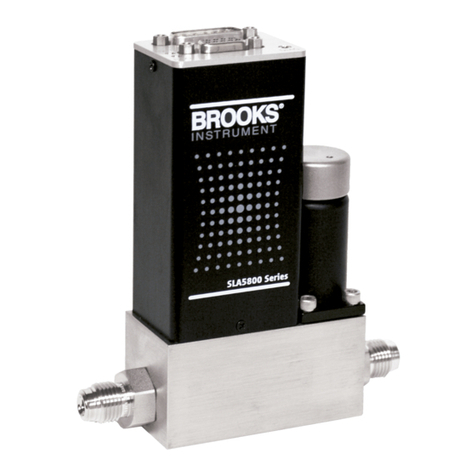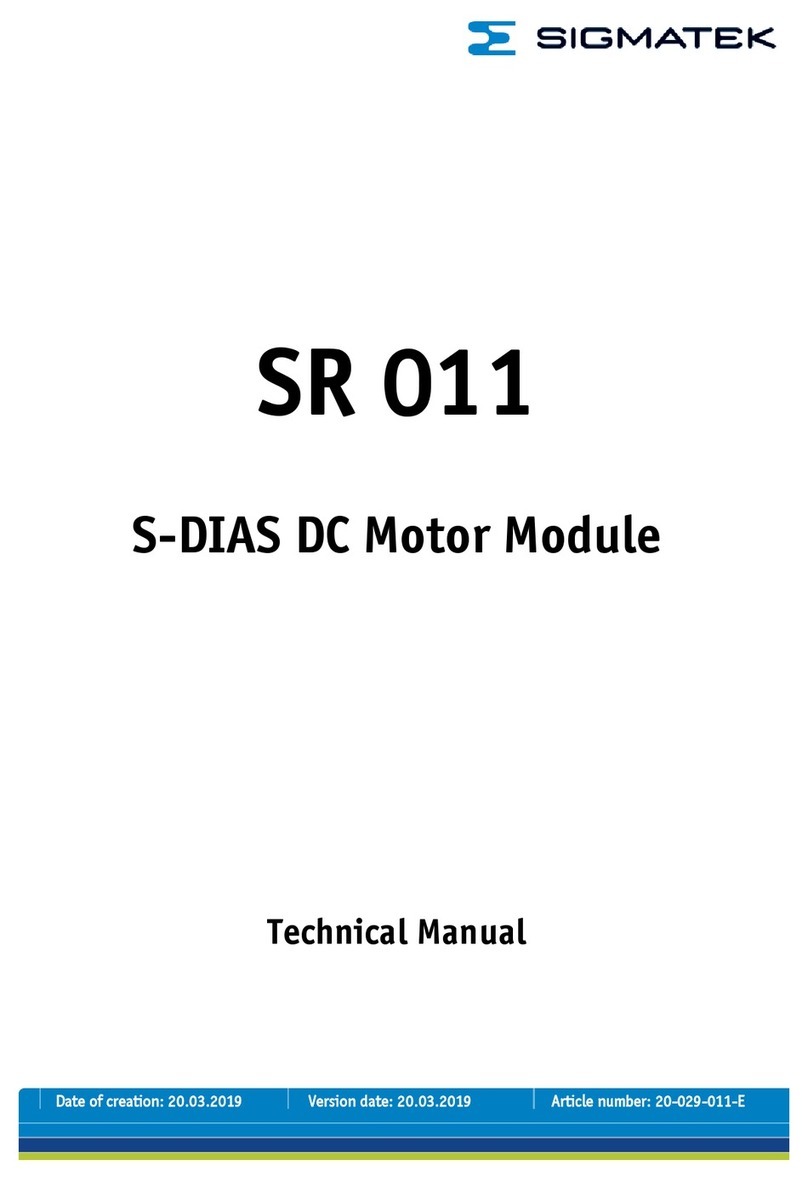
EL-O-Matic F-Series
April 2018
Safety Guide
DOC.SG.EF.EN Rev. 2
3
3. EL-O-Matic F-Series Actuators
These safety instructions are limited to EL-O-Matic F-Series actuators which are
operating using air or inert gas. If the application requires use of a ammable or
hazardous gas, you must contact your Emerson sales ofce for assistance.
3.1 Installation
WARNING - DO NOT EXCEED SPECIFICATIONS
To avoid personal injury and property damage caused by bursting of parts and to avoid parts
damage, malfunction of control valve, or loss of control of the process caused by excessive
pressure, do not exceed the maximum pressures or temperatures for this actuator, as given
in the applicable product literature or on the nameplate. Use pressure-limiting or pressure-
relieving devices to prevent the actuator pressure from exceeding specied limits. If you cannot
determine the limits for this product, contact your Emerson sales ofce before proceeding.
To avoid personal injury, always wear protective gloves, clothing and eye wear when
performing any installation operation.
If hoisting the actuator, use a nylon sling to protect the surfaces. Carefully position the sling
to prevent damage to the actuator tubing and any accessories. Also, take care to prevent
people from being injured in case the hoist or rigging slips. Be sure to use adequately sized
hoists and chains or slings to handle the assembly. If an actuator/valve assembly should be
lifted, it is strongly recommended to connect the nylon lifting slings in such way that the
actuator and valve is supported.
Check with your process or safety engineer for any additional measures that must be taken
to protect against process media.
If installing into an existing application, also refer to the WARNING in the Maintenance
section.
Do not connect a pressure vessel, to the actuator, with unrestricted media.
Do not exceed the MAXIMUM stated operating pressures.
Applying pressure directly to the actuator can turn the actuator's shaft/Valve stem.
Applying a control signal to the actuator's solenoid can turn the Actuator/Valve assembly.
WARNING - MOVING PARTS
Stay away from moving parts to prevent serious injury. When test cycling the actuator and valve
assembly by applying pressure to the A or B port, be aware that there are moving parts like
pinion top, actuator to valve coupling and the valve blade, ball, plug, etc.
Isolate the piping system on which an actuator-valve assembly is installed, when removing
this assembly, and relieve any media pressure that may be trapped in the valve cavities before
removing the actuator for maintenance.
EN

